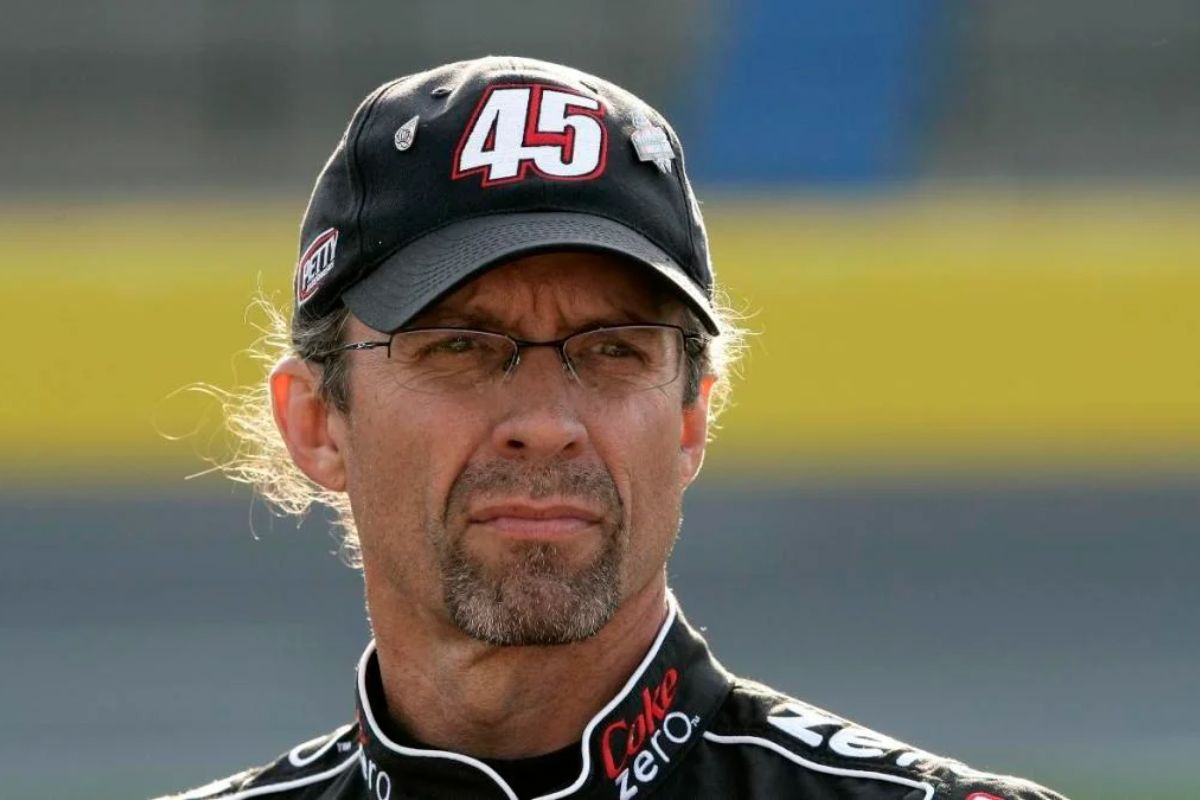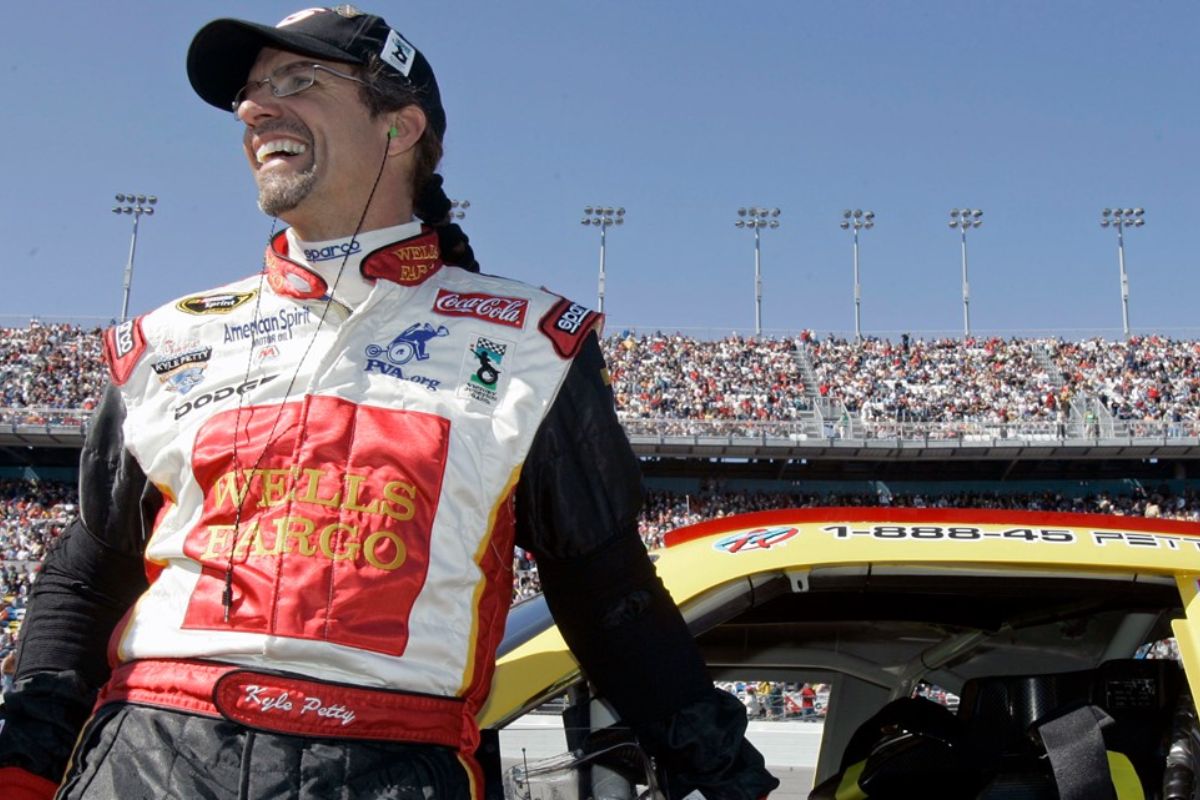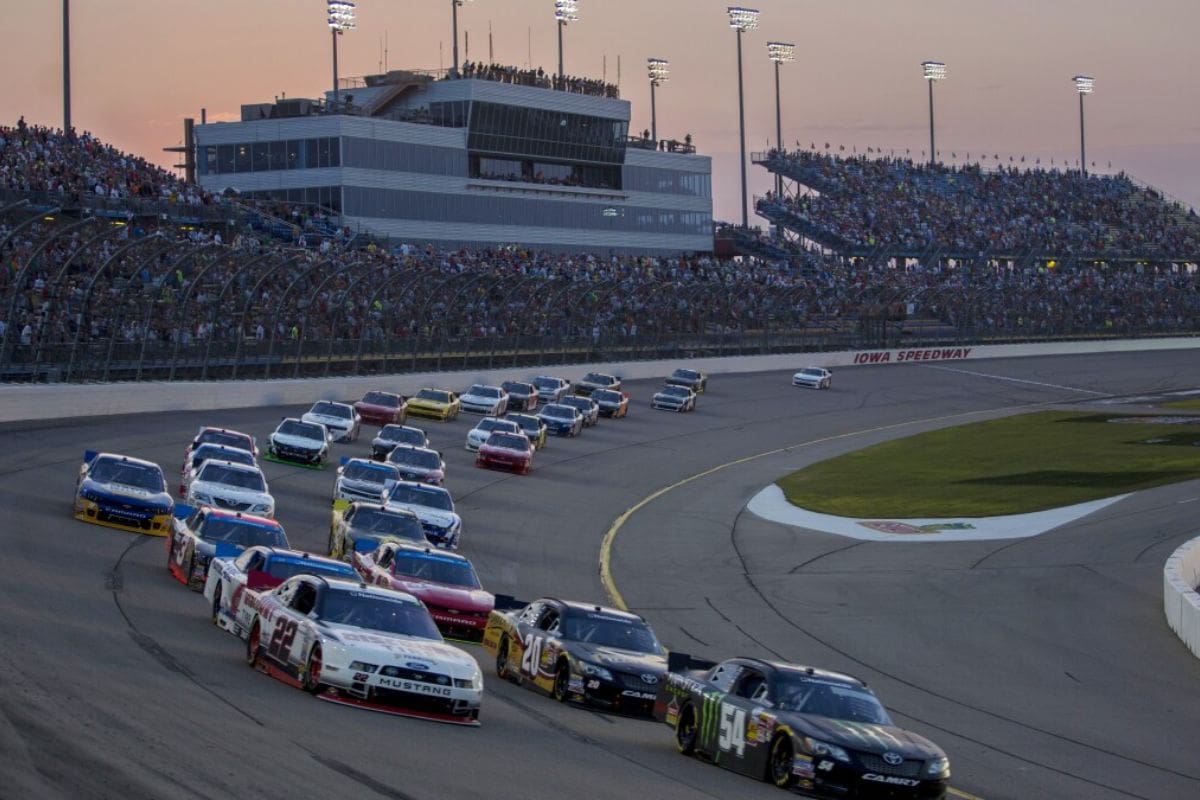Kyle Petty Criticizes NASCAR Drivers: Kyle Petty‘s recent critique of NASCAR drivers’ judgment following the Iowa race emphasizes a critical moment for the sport, particularly in how drivers adapt to freshly repaved tracks. Petty’s pointed observations raise questions about the drivers’ ability to accurately evaluate and respond to rapidly changing track conditions, a fundamental skill in professional racing. This scrutiny highlights the importance of precise decision-making and initiates a deeper conversation about the drivers’ responsibilities amid evolving racing environments. As we examine the broader implications of Petty’s comments, what does this reveal about the future of racing strategy and preparation at Iowa Speedway?
Key Highlights
- Kyle Petty criticized drivers for inconsistent performances and poor judgment at Iowa Speedway.
- He observed drivers struggling to adapt to the newly-repaved track despite ample preparation.
- Petty called for better adaptability and precise judgment from professional NASCAR drivers.
- He highlighted drivers’ unreliable assessments leading to unexpected challenges during the race.
- Petty’s critique sparked discussions on drivers’ responsibilities in handling challenging conditions.
Kyle Petty’s Criticism of NASCAR Drivers
In a recent critique, Kyle Petty highlighted the inconsistency and lack of preparedness among NASCAR drivers in navigating the newly-repaved Iowa Speedway. Petty’s observations stem from the drivers’ apparent struggle to adapt to the track’s fresh surface despite having multiple opportunities to familiarize themselves with its intricacies. His frustration is evident, as he argues that the drivers’ own assessments of the track were unreliable, often leading to contradictory performances and unexpected challenges during the race weekend.
Petty’s analysis gets to the heart of professional racing, where driver preparedness and adaptability are paramount. He emphasized that the essence of NASCAR competition lies in a driver’s ability to quickly conform track conditions and adjust their strategies accordingly. The Iowa Speedway, with its recent repaving, presented a unique challenge that, in Petty’s view, was not met with the level of professionalism expected from top-tier drivers.
The veteran racer pointed out that the inconsistency in performance reflected a broader issue within the racing community. Drivers, he suggested, may have relied too heavily on pre-race simulations and data analysis without adequately translating this information into practical, on-track performance. Petty’s remarks call for a reassessment of how drivers approach new track conditions and emphasize the necessity for a more hands-on, intuitive method of preparation.
“You cannot listen to those guys, okay, they’re their own worst enemies and they don’t even know it. We all, after the tire test at Iowa, we heard how bad it was going to be, how bad the racing was going to be, how bad everything was. And these guys go and test, and say ‘still don’t know what’s going to happen.’ You ‘don’t know what’s going to happen’?” – Petty
Preparation and Testing at Iowa Speedway
Despite Kyle Petty’s criticism, significant efforts were made by drivers to prepare for the Iowa Speedway event, including a thorough Goodyear tire test and practice sessions designed to acclimate them to the track’s new surface. On May 28, notable drivers Brad Keselowski, Kyle Larson, and Christopher Bell took part in an extensive tire test conducted by Goodyear. These sessions were instrumental in evaluating the performance and durability of the tires on the freshly repaved track, ensuring that the rubber compound and tread patterns met the demanding conditions of NASCAR racing.
The information gathered from the tire test was pivotal in guiding teams’ strategies and setup adjustments. The data allowed teams to make informed decisions regarding tire pressures, camber settings, and other critical parameters, aiming to optimize performance and safety.
Moreover, all Cup Series drivers were afforded a 50-minute practice session on the Friday preceding the race. This period was intended to provide ample opportunity for drivers to familiarize themselves with the intricacies of the new track surface and make necessary adjustments to their vehicles.
Despite these meticulous preparations, drivers encountered several unexpected challenges during practice, particularly concerning tire issues. The repaved surface presented unforeseen complications, impacting tire wear rates and overall handling characteristics.
Drivers’ Initial Skepticism and Post-Race Reactions
Many NASCAR drivers approached the Iowa Speedway race with initial skepticism due to the uncertainties introduced by the newly-repaved track surface. The unfamiliar conditions spurred concerns about tire grip, car handling, and the race dynamics as a whole. These apprehensions were not unjustified, as track repaving can greatly alter the performance characteristics that drivers and teams carefully prepare for.
As the race unfolded, however, many drivers found that their initial doubts were largely unfounded. The repaved surface provided improved grip levels and contributed to more thrilling and competitive racing. The event featured high-speed duels and strategic overtakes, which kept both participants and spectators on the edge of their seats. The improved conditions allowed drivers to push their limits more confidently, leading to a display of skill and racing ability that was widely appreciated.
Post-race reactions were overwhelmingly positive, with drivers expressing satisfaction with the track’s performance and the overall quality of the race. The consensus among the racing community was that the newly-repaved Iowa Speedway had the potential to become a staple in the NASCAR calendar. This feeling was echoed by fans, who voiced their enthusiasm for the spectacle and supported the idea of reviving the Iowa Corn 350 in 2025.
Christopher Bell and Ricky Stenhouse Jr.’s Views on Track Repaving
Christopher Bell and Ricky Stenhouse Jr., while acknowledging the benefits of the recent track enhancements at Iowa Speedway, asserted that further repaving, especially in the corners, could enrich the racing experience even more. Bell, who impressively climbed from the rear to a fourth-place finish despite initial car damage, emphasized the potential for significant improvements through thorough corner repaving. Stenhouse Jr. aligned with Bell’s views, stressing that a completely repaved track would likely heighten the quality of racing.
“I say it time and time again: If we had run on the old pavement, it would have been a great race. […] they should definitely go ahead and repave the rest of the corners if not the whole track.” – bell
- Improved Tire Grip: Bell and Stenhouse noted that repaving the corners could greatly enhance tire grip, allowing for more aggressive and strategic moves, thereby intensifying the competition.
- Safety Considerations: With smoother, newly-paved corners, the risk of accidents due to uneven surfaces could be reduced, leading to safer racing conditions for all participants.
- Consistency in Performance: A uniformly repaved track would decrease variability in performance, ensuring that driver skill and vehicle setup are the primary determinants of race outcomes.
- Fan Experience: Enhanced track conditions could lead to more thrilling races, ultimately enriching the spectator experience and potentially increasing fan engagement and attendance.
Future Considerations for Iowa Speedway
Evaluating the prospects for Iowa Speedway, NASCAR officials and drivers are keenly considering further track repaving to improve racing dynamics and ensure safety. The recent race displayed the track’s potential, yet it also highlighted areas needing attention. Both Christopher Bell and Ricky Stenhouse Jr. have emphasized the necessity for enhancements, pointing to the surface conditions as a key factor in future race performance and safety.
UDPB: Ricky @StenhouseJr gives his thoughts on his P5 finish with @JTGRacing and says he'd like to see them pave the rest of the corners, too.
He also talks about taking his team to @knoxvilleraces this weekend with @SJMRacing17 @NosEnergyDrink pic.twitter.com/u1Qhl46XTN
— Always Race Day (@AlwaysRaceDay) June 17, 2024
Yeah, although the track raced really well for new pavement, hopefully we can get more new pavement from all the way to the top and maybe we kind of start running all over this place like when the Xfinity series was last coming here. […] Yeah, I don’t know. I mean I think we were all nervous about it.” – stenhouse jr
The ongoing debate over repaving stems from the balance between maintaining the track’s unique characteristics and ensuring it meets contemporary racing standards. Iowa Speedway’s current surface, while providing a challenging and engaging race, has been criticized for its roughness and potential impact on tire wear. This has led to discussions on whether a complete resurfacing or targeted repairs would better serve the interests of drivers and the sport.
NASCAR’s commitment to safety and high-quality racing experiences means that such considerations are not taken lightly. Analyzing data from recent races, including tire performance and wear patterns, will be vital in making an informed decision. The input from experienced drivers like Bell and Stenhouse Jr. offers valuable insights into how the track’s surface affects handling and race strategy as a whole.
News in Brief: Kyle Petty Criticizes NASCAR Drivers
Kyle Petty’s criticism of NASCAR drivers’ judgment following the Iowa race highlights the critical importance of adaptability and precise decision-making in professional racing.
The newly repaved Iowa Speedway posed unique challenges, sparking significant discussion on race strategy and track evaluation.
Drivers’ reactions, including those of Christopher Bell and Ricky Stenhouse Jr., showcase different perspectives on handling new track conditions.
Future considerations for Iowa Speedway will likely concentrate on optimizing both track conditions and drivers’ flexibility for improved racing performance.
Our Reader’s Queries
Q. What is the relationship between Kyle and Richard Petty?
A. Growing up in the shadow of NASCAR greatness, Kyle Petty, son of 7-time NASCAR Cup Champion and Hall of Famer Richard “The King” Petty, and grandson of NASCAR pioneer Lee Petty, immersed himself in the racing world from a young age. His childhood was spent in the garage, where he nurtured dreams of continuing the family legacy on the track.
Q. Did Kyle Petty ever win a NASCAR race?
A. From 1985 to 1996, Kyle Petty carried his iconic number and sponsorship to Wood Brothers Racing. In his debut year with the team, he achieved a career-best seven top-five finishes and secured his first top-ten points finish. The following season marked a pivotal moment as Petty clinched his maiden career victory at the renowned 1986 Miller High Life 400 in Richmond, ultimately concluding the season with a tenth-place finish in the standings.
ALSO READ: Kyle Petty Criticizes Austin Hill Amid Sonoma Controversy



